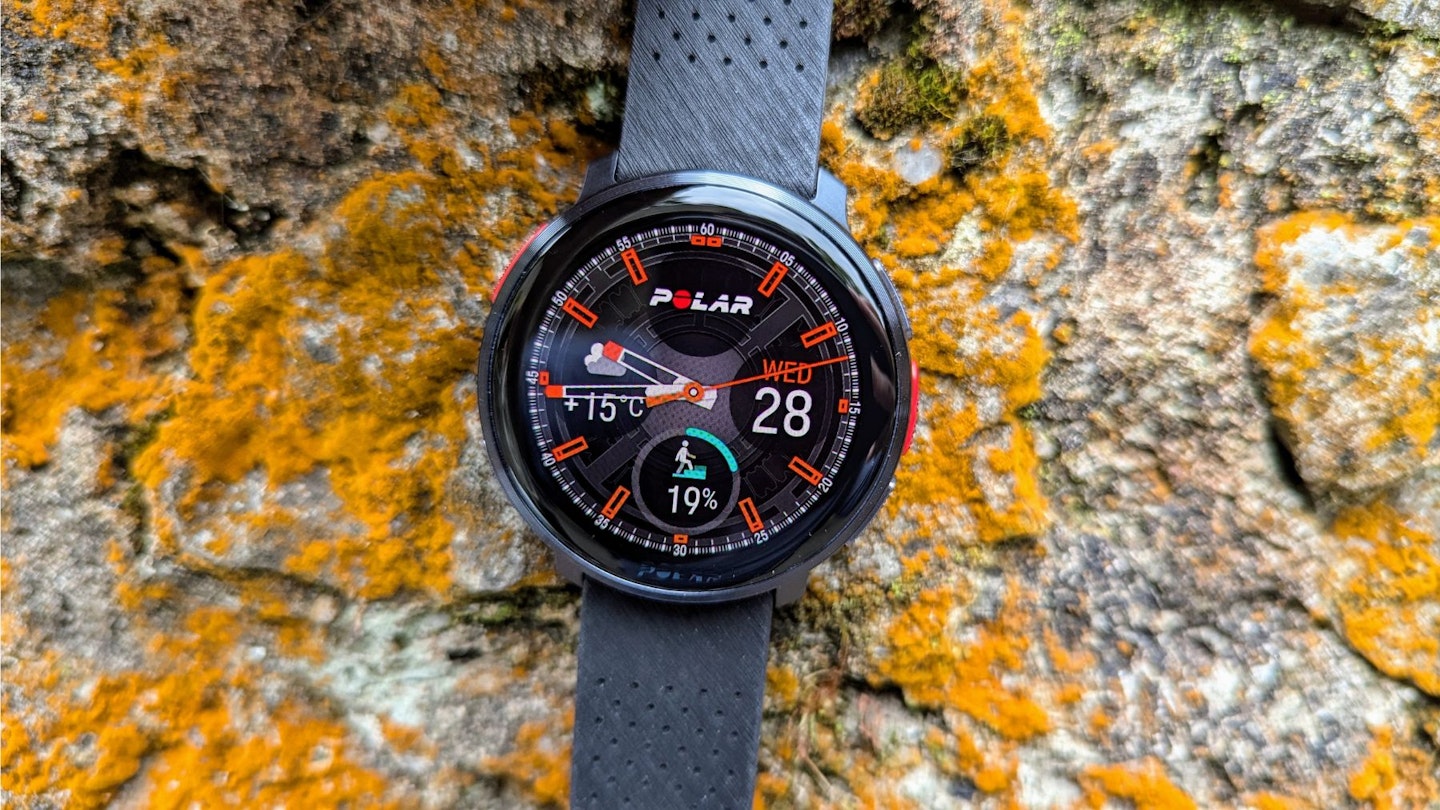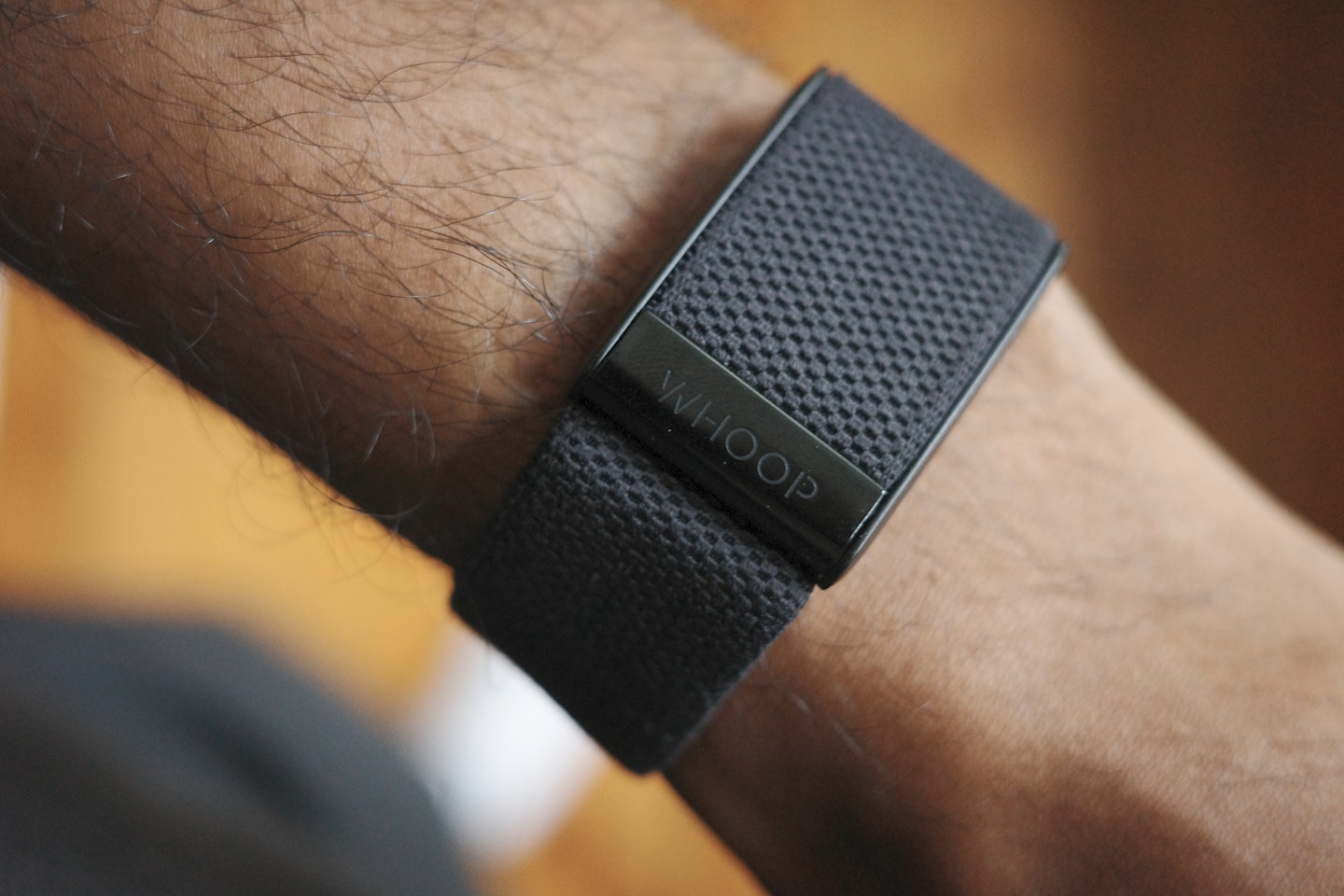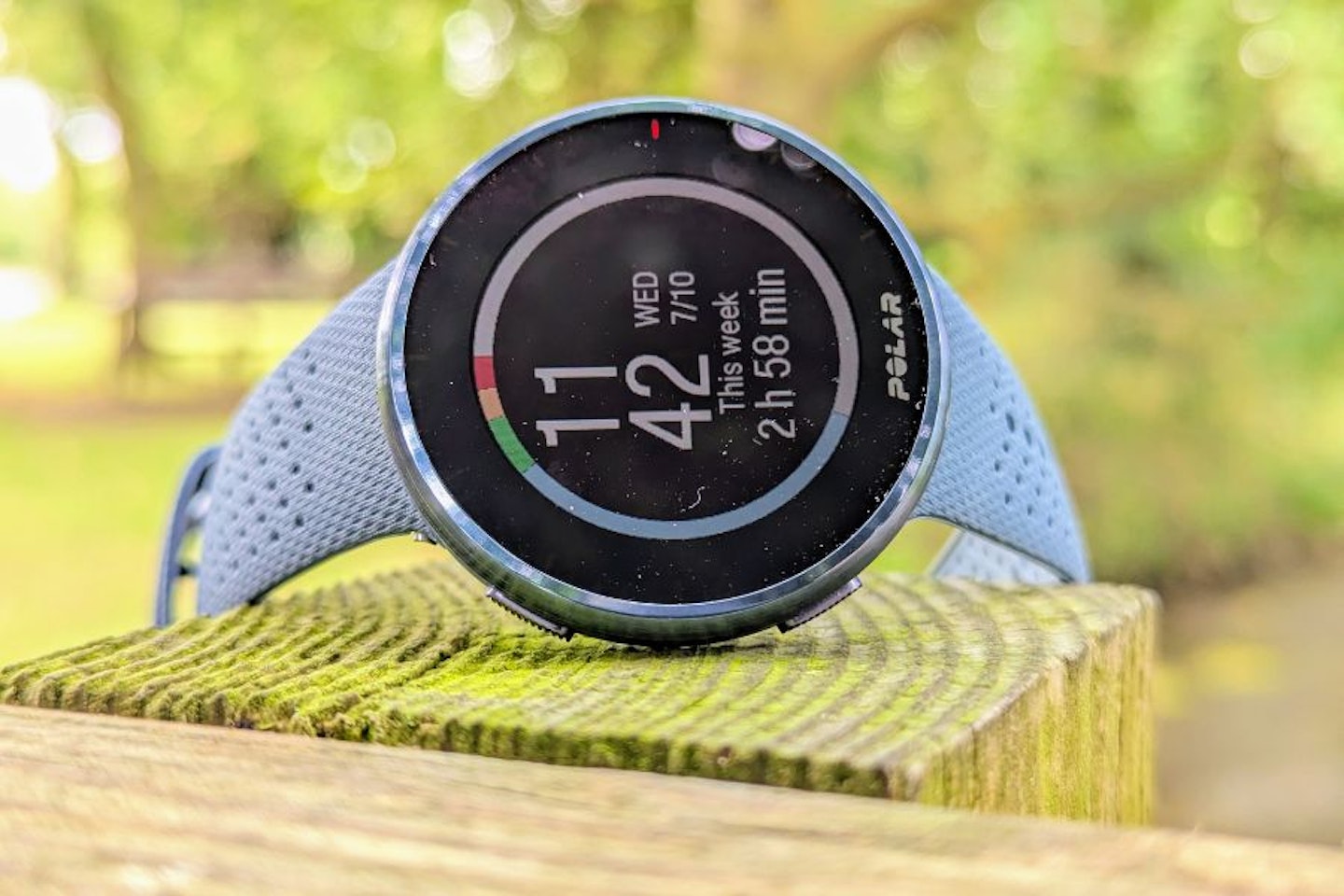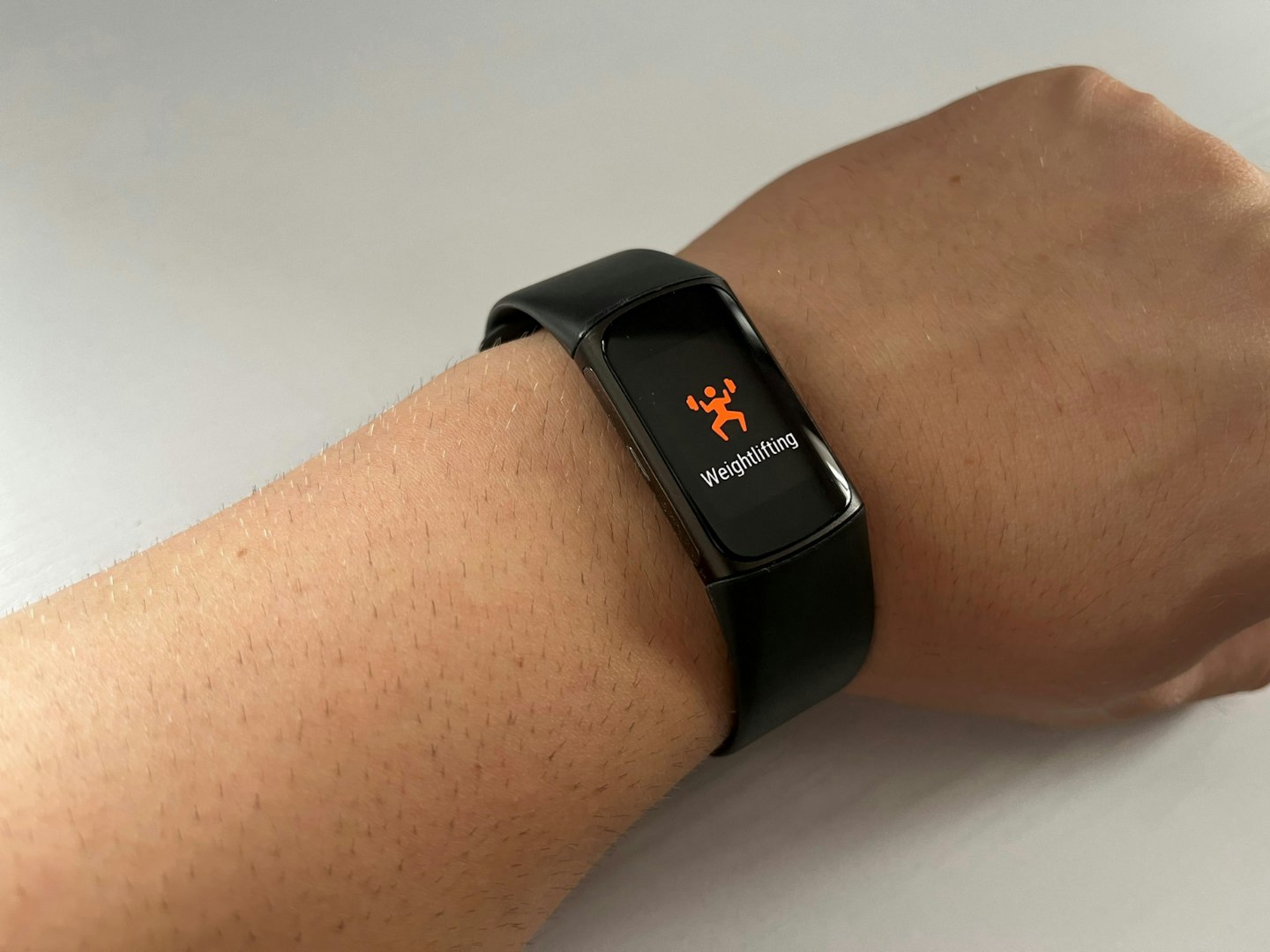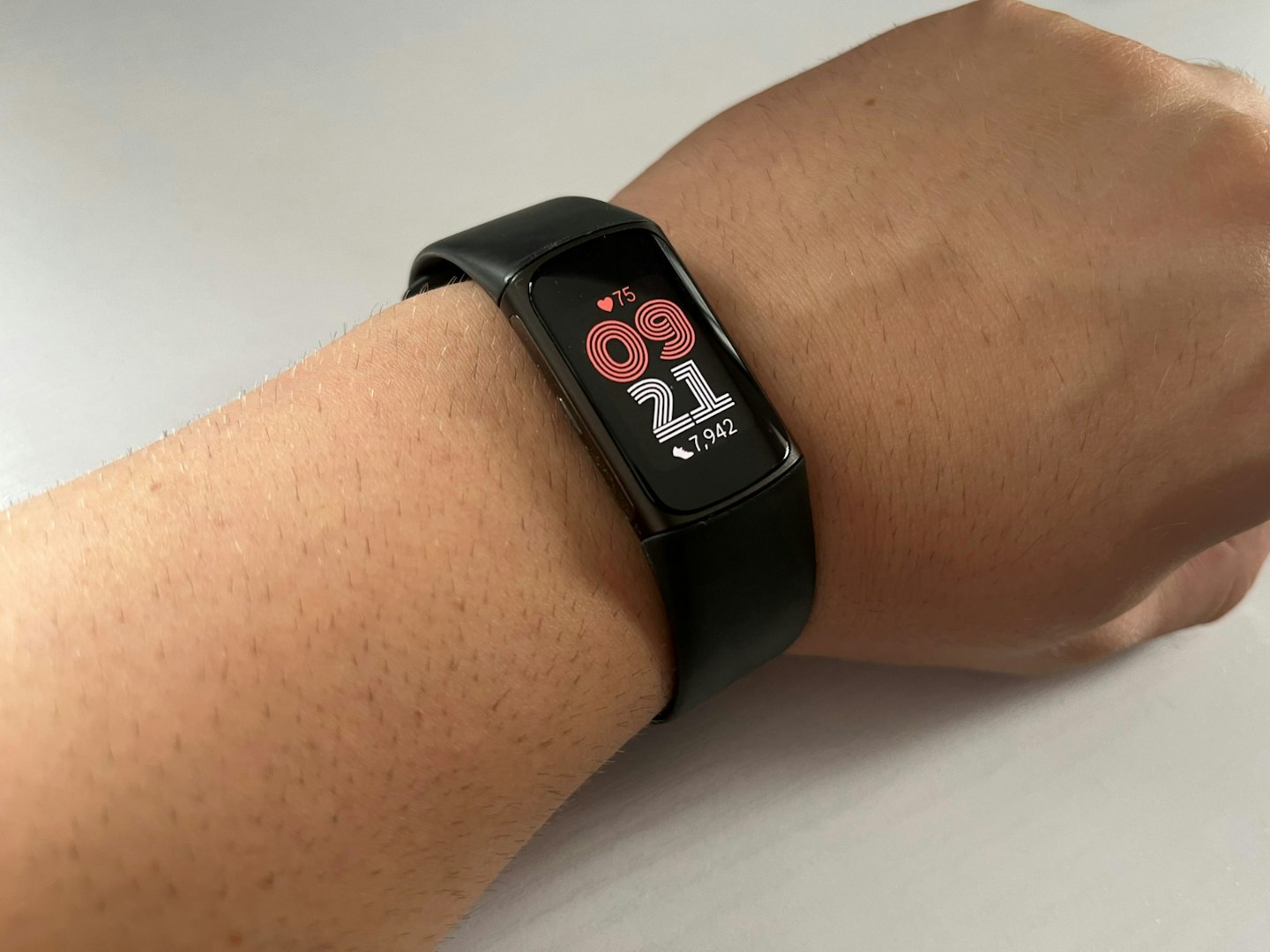Released in October 2023, the Polar Vantage V3 is the latest and greatest wearable from the well-known Finnish brand. Marketed as a "premium multisport watch", it's designed to appeal to anyone who is serious about getting fit. Polar emphasises the wealth of training and recovery tools at your disposal when you wear this watch – and there's certainly plenty packed in.
Replacing the Polar Vantage V2 (which was released back in 2020), the Vantage V3 introduces an upgraded set of sensors to track skin temperature, ECG and blood oxygen. There are also improvements to GPS, heart-rate tracking, and a new AMOLED display to replace the memory-in-pixel screen on the older model.
What this watch is not, is a smartwatch in the truest sense of the word. Unlike an Apple Watch or Samsung Galaxy Watch, the Vantage V3 has a relatively limited set of smart features, and doesn't offer lots of apps and games. This is a device that's built to appeal to anyone who wants a smartwatch for tracking health and fitness, without the distractions (and much more limited battery life) of those true smartwatches. But how does it compare to the best fitness trackers on the market, and is it worth the premium price tag that comes with it?
What's The Best's Steven Shaw has been wearing the Polar Vantage V3, putting it through its paces to see just how good it really is. Read on, to find out what he thought.
 Polar
Polarwww.polar.com
Pros
- Beautiful AMOLED display
- Dual-band GPS is extremely precise
- Offline maps for improved navigation
Cons
- Limited smartwatch capabilities
- Water resistance has been downgraded from Vantage V2
| Display | 1.39-inch AMOLED, 454 x 454 pixels |
| Battery Life | Up to 10 days |
| GPS | GPS, Glonass, Galileo, BeiDou, QZSS |
| Water Resistance | WR50 |
| Compatibility | iOS and Android |
| Dimensions | 47.3 x 47.3 x 13.5 mm |
| Weight | 57 grams |
Polar Vantage V3 design

The Polar Vantage V3 - also available on Amazon - is a premium device, and this is reflected in the high-quality materials used to build it. Aerospace-grade aluminium encases the front of the watch, while the display uses toughened gorilla-glass to help make it scratch and shatter-resistant. The back of the watch is made from plastic, which helps to keep the weight down to around 57 grams. The watch comes with a soft and comfortable silicone strap. Pleasingly, two strap sizes came in the box, to suit larger and smaller wrists.
While this watch is built to be durable, water-resistance has been downgraded from the 100 metres of the Vantage V2, down to 50 metres. While this is still fine for swimming, presumably Polar didn't feel that many users of this watch would be venturing into deeper waters. But it's always disappointing to see a downgrade from one generation to the next.

The undoubted star of the show though, is the gorgeous AMOLED display. It's considerably sharper and brighter than the memory-in-pixel (MIP) display of its predecessor. The touchscreen is slick and responsive, with no lag, and slightly larger than the one on the V2 model. It's a very noticeable upgrade. If you prefer not to use the touchscreen, or have sweaty hands during a workout, five pleasingly tactile buttons allow you to navigate and control the watch.
Setup is, as usual for Polar, very simple. Download the Polar Flow app, switch on the watch and pair it with the app via Bluetooth. Then, follow the steps on the screen, and within a few minutes the watch is ready to go. It's a very straightforward process.
Stacked with features

Polar has worked hard to make sure the Vantage V3 keeps up with the competition. As a result, there is an abundance of training and recovery features that make this watch suitable for almost any athlete. I've highlighted some of those features already – an upgraded heart rate sensor, night-time temperature and blood oxygen level tracking, plus an ECG (electrocardiogram) feature, which can help detect an irregular heart rhythm.
There's also improved dual-frequency GPS, to boost the accuracy of outdoor activity recording, as well as the usual steps, calorie, and sleep tracking tools. Sleep tracking won't just tell you how long you slept for, either. Here, the Polar Vantage V3 adds metrics such as 'SleepWise' to show how sleep impacts your alertness through the day, and 'Nightly Recharge' which tells you how well you've recovered from the exertions of the previous day.

'Training Load Pro', 'Recovery Pro', 'FitSpark' and 'FuelWise' add further detail to support your fitness goals. Training Load tells you if you are training too much (overreaching), maintaining your fitness, detraining, or slowly increasing your load in a productive (and sustainable) fashion.
I'll also mention the variety of fitness tests available. These include a walking test, a leg recovery test, and an orthostatic test, which measures your cardio recovery. These are great additions to the watch, although potentially may be more than many people need. You need to repeat some of the tests multiple times to allow the Vantage V3 to build up a baseline for you.

Add to all this a plethora of running and swimming metrics, training guidance, and advice on how to improve recovery from training, and you have a watch that offers almost everything you could want or need. I was seriously impressed by the variety of features that are designed to help you improve your fitness without overdoing it.
Impressive performance

The Polar Vantage V3 can have all the features in the world, but they aren't much use if the watch doesn't perform. Happily, Polar's flagship multisports watch does not disappoint.
I was really impressed by how well the Vantage V3 performed. Polar has introduced a new 'Elixir' biosensor, and it appears to have made a big impact, compared to the slightly underwhelming performance of the Polar Vantage V2.
When it comes to GPS, I've already highlighted that this watch utilises dual-frequency GPS, connecting both L1 and L5 bands. It also supports GPS, Glonass, Galileo and BeiDou GNSS systems. In other words, it's designed to have the best possible chance of finding a signal in almost any terrain.
During testing, I found it to be impressively accurate. On my usual 5.5-km route, where I was able to compare it with a Garmin Forerunner 255 (which also offers dual-frequency support), the readings were impressively consistent. Differences between the two watches were never more than 50-metres apart, and usually much closer than that (around 10 metres). On one longer 7.6-km route, the two watches tracked exactly the same distance. I was confident that the distance I covered was being accurately reflected by the Vantage V3.
Exercise tracking
I've mentioned the Elixir sensor, which includes the most advanced optical heart rate tech Polar has yet produced. And once again, I felt it performed brilliantly. I tried it across a variety of workouts, including strength training, high-intensity cardio, and yoga. The average heart rates measured by the two watches I wore were the same in all bar one workout, where there was one beat per minute (BPM) difference. Max heart rates were ever so slightly more variable, but usually within one BPM of one another, and no more than five BPM.
Sleep

Sleep tracking can be hard to assess, and the many fitness trackers and smartwatches I've tested have thrown up some pretty wild results over the years. I felt this was one of the most accurate devices I've worn.
One of my biggest complaints with these devices is that they can struggle to detect when you're awake but lying still in the middle of the night. That wasn't a problem for the Vantage V3, which was able to tell when (on a particularly bad night) I woke up in the middle of the night, and didn't get back to sleep for several hours.
The watch tracks all sorts of sleep related metrics, including Nightly Recharge, which is a lot like Garmin's excellent Body Battery tool. It tells you how restorative your previous night's sleep was, and will give you suggestions on what would be an appropriate intensity of activity for the day ahead. This is a crucial tool in aiding recovery, and really does help this device stand out from a lot of competitors that can't offer the same depth of insight.
Battery
Finally, a quick word on battery life. Polar claims the Vantage V3 will last for up to 10 days in smartwatch mode. I managed around nine days before the watch insisted on being charged. This included frequently activating GPS for tracking outdoor activities, plus tracking other workouts. Many people will easily get 10 days, if not a bit longer, between charges. If you use the always-on display, the battery will take a hammering – expect around three or four days between charges.
I also noticed that, once it had fallen below five per cent battery, the watch wouldn't allow me to record any training. While this may seem annoying, I thought it was a clever way to ensure that the watch won't die mid-way through your workout.
Polar Flow app

While the Polar Vantage V3 displays plenty of data, you'll want to make use of the Polar Flow app to really get into the details. And the app is incredibly comprehensive. There's an argument that some users could find it a little overwhelming, because there's a lot of data available. But it's all very clearly presented, and there is plenty of additional information available to help interpret the data and explain what it means.

When you open the app, you are presented with a summary of today's metrics. This includes all your sleep metrics, such as skin temperature, sleep time, sleep charge, and more. As the day goes on, you'll also get other insights, for example any workouts you've done, any fitness tests you've completed, your cardio load, and heart rate.

At the top is your progress towards meeting your activity goal for the day. If you want deeper insights into any of these, simply tap on it to be introduced to the details of each specific metric. It's a smart way to ensure people aren't overwhelmed. If you're happy with broad brushstrokes, the main page will suffice. But, if you're like me and love diving into the data, this app can keep you occupied for a while.
Any downsides?

Lack of smartwatch features
I think the Polar Vantage V3 is a superb fitness tracking device. But the one area where it is noticeably lacking is in the absence of smartwatch features. You have a limited set of smart features – music controls, and notifications from your phone. But there isn't a lot else.
Of course, for some people, this will be a strength rather than a drawback. And the absence of smart features plays a big part in that excellent battery life. But for more casual users who want a more complete smartwatch experience, the Vantage V3 will be found wanting.
Price and competition

The Vantage V3 has an RRP of £519, making it one of Polar's most expensive devices. We have, however, seen it discounted closer to £400 on occasion. It is undoubtedly a flagship device, with plenty of great features that elevate it into that more premium price range.
Its price is comparable to the standard version of the Garmin Fenix 7 (RRP £519.99), and slightly cheaper than the Garmin Forerunner 965 (RRP from £599.99), one of Garmin's most advanced running watches. It's also considerably more expensive than the Polar Pacer Pro, which has an RRP of £299 (although the Vantage V3 is a newer device, with more features).
It is also more expensive than a lot of the best-known smartwatches. The Google Pixel 3, for example, has an RRP from £349, while an Apple Watch Series 10 starts from £399. Both devices offer a more comprehensive smartwatch experience and plenty of health and fitness features. A more affordable fitness tracker such as the excellent Fitbit Charge 6 costs £139 - considerably less than this Polar watch.
All this does beg the question of whether the Vantage V3 is good value or not. The answer depends on whether you're going to make use of all the training and recovery tools. If so, then this has a lot to offer, and is reasonably priced for everything that it has. If not, you're spending a lot on a premium device that has more than you need.
Who is it for?

This is a device with a strong focus on training and recovery, and helping you optimise your schedule to deliver peak performance. As a result, I'd say this is a serious sports watch for serious sportspeople, who are likely to get the most out of it. Of course, more casual users will still get an excellent device. But if you just want basic fitness tracking, you can get that elsewhere at a lower price.
It's also not a device for anyone who wants a "proper" smartwatch. This has a few basic smart features, but it isn't designed to replicate those devices. It's a training aid, and as such, dispenses with features that don't necessarily support that focus.
I particularly like the focus on recovery that this watch offers, and for anyone who might be prone to overtraining (which can increase the risk of injury), the support this device offers could be invaluable.
Would we recommend it?

The Polar Vantage V3 is an easy device to recommend, because it does a lot, and does it very, very well. But I wouldn't say this is a device for everyone - in the same way that I wouldn't recommend a Ferrari to someone who wants a car for the school run. Even though it's brilliant at what it does, this isn't a watch that's right for everybody.
If you're a serious athlete, or a dedicated fitness enthusiast, you'll get plenty from the Polar Vantage V3. The suite of training and recovery metrics is comprehensive and offers far more insight than many more basic fitness trackers. The display is superb, battery life is very respectable, and the app is comprehensive. Simply, it's one of the best devices I've tested, and one of the best fitness watches currently available.
More items to consider
If you like detailed data, and want to focus on recovery, the unobtrusive Whoop Band 4.0 could be a suitable alternative. It offers plenty of comprehensive insights, but some users could find it overwhelming. It requires a subscription, too.
A cheaper alternative to the Vantage 3, the Polar Pacer Pro offers a solid training and recovery toolkit at a more affordable price.
The Fitbit Charge 6 is the most advanced fitness tracker Fitbit (now owned by Google) has produced. It's a great option for people who are just getting started on their health and fitness journey.
Who tested it?
Steven Shaw, Senior Writer and reviewer at What's The Best, tested the Polar Vantage V3, having spent years wearing, testing and writing about fitness trackers.
Steven is passionate about health and fitness, and thoroughly enjoys putting a new watch through its paces. He's worked as a freelance writer and staff writer covering smartwatches, fitness trackers and other tech for many outlets over the years.
How the product was tested
I tested the Polar Vantage V3 over a couple of weeks, using it as my main watch, and tracking sleep, steps, exercise, and my general daily activity. I was able to test it with a variety of different workouts, including strength training, high-intensity cardio, walking, and yoga, among others.
I wore a Garmin Forerunner 255 on the other wrist, comparing data to gauge accuracy and consistency on the Vantage V3. I also made regular use of the Polar Flow app, to see what insights it offered and how well it presented and explained the data it was showing me.
Why should you trust us?
At What's The Best, our mission is to provide accurate and reliable reviews, ensuring our readers receive honest and transparent information about the best technology products available. Anything less would undermine our commitment to being a trusted source of unbiased product information.
Our dedicated in-house writing team comprises experts with extensive experience and a genuine passion for technology. Collectively, we have spent decades testing and writing about tech, leveraging our expertise in all our articles, advice pieces and reviews.
We maintain complete editorial independence and do not accept payment for product reviews. Our writers have full control over their content, ensuring that products are selected based solely on the needs of our readers. While we may earn commissions or other compensation from links on our website, this never affects our product choices. These links enable us to continue offering valuable consumer advice, without compromising the integrity of our reviews.
How we test products at What's The Best
At What's The Best, we ditch the gimmicks and deliver sweat-tested reviews for real fitness enthusiasts. Our team of experienced athletes puts the latest wearables and equipment through their paces in real-world workouts, from running trails to home gyms. We don't just read specs – we use products as they are intended and push our PRs so you know what truly performs.
The result? Unbiased buying advice that gets you moving. We only review the most significant and relevant fitness tech and equipment on the market, saving you time and frustration. Can't find a review for your specific fitness goal? We're constantly adding new products to our ever-growing library, so stay tuned.
Ready to level up your workout with trusted advice? Visit our dedicated page on fitness tech and equipment reviews.
Steven Shaw is a Senior Tech Writer and Reviewer for What's the Best. Steven writes how-to guides, explainers, reviews and best-of listicles covering a wide range of topics. He has several years of experience writing about fitness tech, mobile phones, and gaming.
When Steven isn't writing, he's probably testing a new smartwatch or fitness tracker, putting it through its paces with a variety of strength training, HIIT, or yoga. He also loves putting on a podcast and going for a long walk.
Subscribe to the What's The Best Newsletterto keep up to date with more of the latest reviews and recommendations from the What's The Best team.
